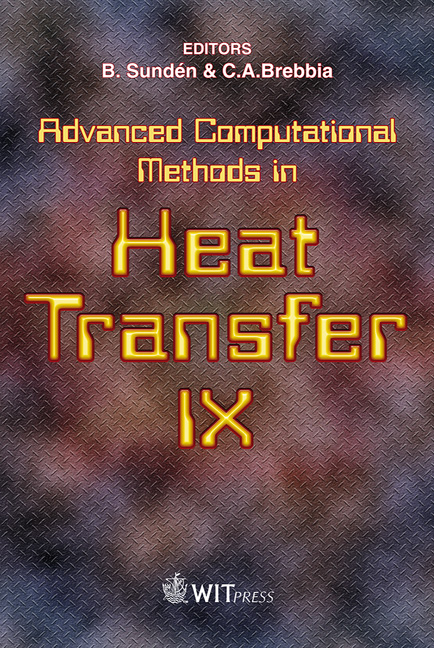Experimental Study Of In-line Tube Bundle Heat Transfer In Vertical Foam Flow
Price
Free (open access)
Transaction
Volume
53
Pages
8
Published
2006
Size
398 kb
Paper DOI
10.2495/HT060211
Copyright
WIT Press
Author(s)
J. Gylys, S. Sinkunas, V. Giedraitis & T. Zdankus
Abstract
Foam has an especially large inter-phase contact surface which allows using it as a coolant. Characteristics of one type of foam – statically stable foam – demonstrated its perfect availability for this purpose. Our previous investigations of heat transfer processes in statically stable foam flow showed that large heat transfer intensity may be reached at a small mass flow rate of the foam. Statically stable foam flow is the two–phase system that has number of peculiarities: drainage of liquid from foam, diffusive gas transfer and destruction of inter-bubble films. Those phenomena are closely linked with each other and make extremely complicated an application of analytic methods for the study of heat transfer in foam. Thus experimental method of investigation was selected in our work. Experimental investigation of the heat transfer process from the in-line tube bundle to the vertical statically stable foam flow was performed. Dependency of heat transfer intensity on flow parameters and on tube position in the bundle was determined. The results of the experimental investigation are presented in this paper. Keywords: vertical foam flow, void fraction, heat transfer, experimental channel, in-line tube bundle. 1 Introduction Foams are suitable for a lot of different purposes. It can be applied for heat and mass transfer performance as well, but usage of foam as coolant in heat exchangers or in foam apparatus depends on capability to \“control” foam flow.
Keywords
vertical foam flow, void fraction, heat transfer, experimental channel, in-line tube bundle.





